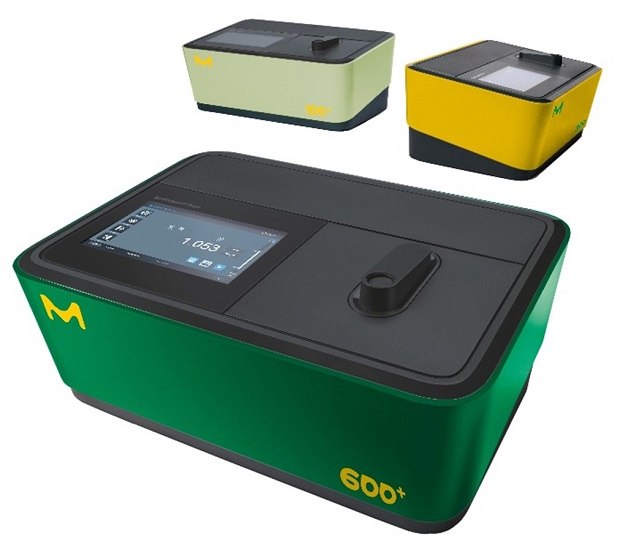Turbidimetric Determination of Potassium in Soils Subsequent Extraction with CAL Buffer Analogous to LUFA
Abstract
This protocol outlines the turbidimetric determination of potassium in soils following extraction with a CAL buffer analogous to LUFA. The procedure involves preparing a soil extract and measuring potassium concentrations using Spectroquant® test kits and photometers. The analysis helps assess soil quality and guide the selection of appropriate fertilizers or manure to enhance crop growth.
Section Overview:

Spectroquant® spectrophotometers - Prove 100 plus, Prove 300 plus, & Prove 600 plus
Introduction
Potassium (K), along with phosphorus and nitrogen is an important macronutrient for plants. The element is responsible for the development of a movement system of water, nutrients, and carbohydrates in plant tissues. It also helps in the control of stomata, which regulates the movement of gases1. Research also suggests that potassium has an impact on carbon distribution and nitrogen metabolism2. The intake of potassium by plants is carried out from the soil, and it is therefore important that soil for cultivation must have prescribed concentrations of potassium, which will vary from species to species. A deficiency of potassium affects plant growth and development significantly3.
Testing of soil for the concentration of potassium is hence important to study the nature of the soil and to decide the type of manure or fertilizer to be used for augmenting the growth of a crop.
This application note details the turbidimetric determination of potassium in soils, after extraction with CAL buffer analogous LUFA.
Reagents, Instruments and Materials
Potassium Test Kits/Reagents
For the measurement, one of the following Spectroquant® test kits is necessary:
Instrument(s) & Devices
For the measurement, one of the following Spectroquant® photometers is necessary:
- Spectroquant® VIS Spectrophotometer Prove 100 Plus (1.73026)
- Spectroquant® UV/VIS Spectrophotometer Prove 300 Plus (1.73027)
- Spectroquant® UV/VIS Spectrophotometer Prove 600 Plus (1.73028)
- Spectroquant® Colorimeter Move 100 (1.73632)
Also, legacy systems
- Spectroquant® Spectrophotometer Prove 100/300/600
- Spectroquant® Photometer NOVA 30/60/60A
Software for Data transfer
- Optional Spectroquant® Prove Connect to LIMS software package (Y.11086) to transfer your data into an existing LIMS system.
Instrument Accessories
- Rectangular cells 10 mm (1.14946) and/or
- Rectangular cells 20 mm (1.14947) and/or
- Rectangular cells 50 mm (1.14944)
Other Reagents and Accessories
- Calcium lactate for soil analysis (1.02103)
- Calcium acetate for soil analysis (1.09325)
- Water for analysis (1.16754)
- Acetic acid 100 % for analysis (1.00063)
Experimental Procedure
Reagent Preparation
CAL-Extraction solution: Dissolve 15.4 g calcium lactate for soil analysis and 7.9 g calcium acetate for soil analysis separately in 300 mL of water for analysis whilst warming. Combine the two solutions in a 1 L volumetric flask and add 17.9 mL acetic acid 100 %. Allow to cool, make up to the mark with water for analysis and mix well.
Sample Preparation
- Air-dry the soil sample, subsequent to removing course particles such as stones and plant material.
- Sieve the sample through a 2 mm mesh.
- Place 5 g of sample in a separating flask of approx. 300 mL volume and add 100 mL of extraction solution.
- Shake the closed flask for 90 minutes at 175 shakes per minute.
- Filter the extract through a folded filter and dispose of the first 10 mL filtrate.
- Adjust the clear filtrate to pH 5 - 7 with sodium hydroxide solution 32 %.
- Samples containing more than 35 mg/L K2O should be diluted with extract solution.
Analysis
Determine with one of the above-mentioned test kits.
Calculation
Measurement should be made against the pure extraction solution. If the sample extract has a yellow color, it should be measured, without the addition of reagent, as a blank and the result subtracted from the sample value.
| Potassium content in mg/kg K2O = | analysis value in mg/L K x 1.2 x 100 |
| weight of sample in g |
See more applications for photometry at Protocols and Application Notes
Related Products
References
To continue reading please sign in or create an account.
Don't Have An Account?